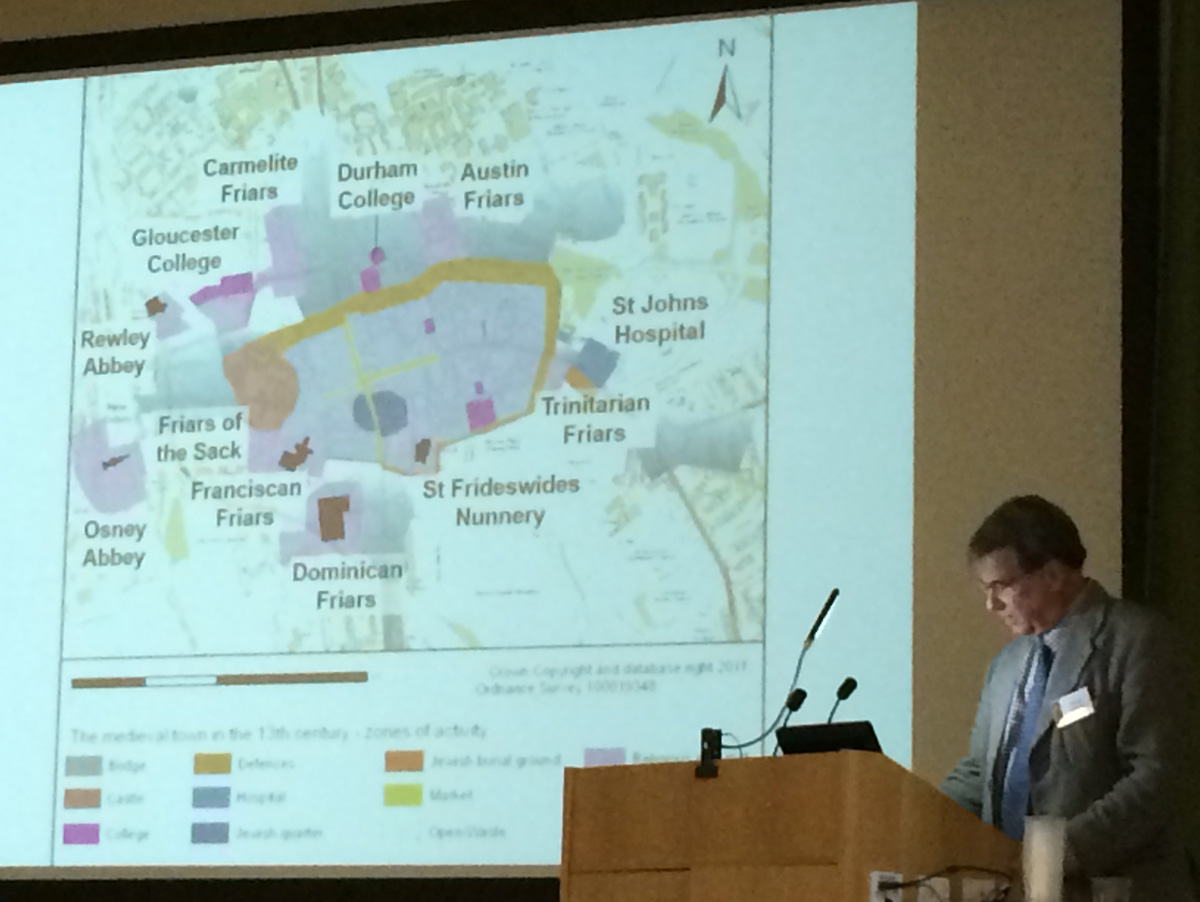
Discovering the Medieval Dominicans
 The first day of the conference The Influences of the Dominican Order in the Middle Ages featured a number of fascinating insights into both the nature of their mission and their everyday lives.
The first day of the conference The Influences of the Dominican Order in the Middle Ages featured a number of fascinating insights into both the nature of their mission and their everyday lives.
Among the highlights of the day was a walking tour of Oxford led by archaeologist George Lambrick, including the sites of the first (1221) and second (1246) medieval Dominican priories, as well as a visit to the current excavations of part of the Franciscan Greyfriars complex, and other key sites of the medieval town and the religious houses that grew up in a ring outside its walls.
The Dominicans of the 13th century played an important and influential role in the development of the early University of Oxford. The second priory housed up to 100 friars and grew to be about the same size as Lincoln College is today – and about half the size of the modern Blackfriars priory.
 George Lambrick with delegates at the site of the first Dominican priory (1221) – roughly where Blue Boar quadrangle (Christ Church) stands today.
George Lambrick with delegates at the site of the first Dominican priory (1221) – roughly where Blue Boar quadrangle (Christ Church) stands today.
 Andrew Brookes OP in front of the sole surviving section of wall from the second medieval Blackfriars (1246), comprehensively demolished at the Dissolution of the Monasteries (1538). This wall with two archways survives within a 17th-century building now part of the modern deaf and hard-of-hearing centre.
Andrew Brookes OP in front of the sole surviving section of wall from the second medieval Blackfriars (1246), comprehensively demolished at the Dissolution of the Monasteries (1538). This wall with two archways survives within a 17th-century building now part of the modern deaf and hard-of-hearing centre.
 The delegates surveyed the current excavations of the living quarters of medieval Greyfriars, from the roof of the Westgate shopping centre. The corner of the cloister can be seen at bottom left, and the kitchen with darkened earth in the centre foreground. Greyfriars and Blackfriars were located near to each other on the south side of the town between the wall and the river.
The delegates surveyed the current excavations of the living quarters of medieval Greyfriars, from the roof of the Westgate shopping centre. The corner of the cloister can be seen at bottom left, and the kitchen with darkened earth in the centre foreground. Greyfriars and Blackfriars were located near to each other on the south side of the town between the wall and the river.
The conference continues with a wide range of papers being presented on the Dominicans’ influence on theology and philosophy, art and liturgy, music and more.
Bones of friars and benefactors recovered from the excavations thirty years ago of the second Dominican priory are due to be reinterred in an ossuary within the modern Blackfriars in the near future.
Further information on the history of the Oxford priories, including a film on the medieval priories with a 3D reconstruction, can be found here.
Sorry, the comment form is closed at this time.



A Website Visitor
I’ve been interested in what kind of manuscript or text in the vernacular English the first Dominicans of the 1221 priory left. Would you mind giving me a suggestion? Where can I get this kind of information?
A Website Visitor
Fr Richard Finn OP responds: The very early friars would largely have preached in the vernacular to townsfolk, few of whom would have been readers in any language. The written texts to assist the friars in that task were for the friars themselves and would largely have been in Latin. The situation would then have developed over the next centuries with the slow growth of a bigger pool of more prosperous lay men and women (including nuns) able to read vernacular devotional and literary texts. Examples of the sort of devotional texts written by English friars (not necessarily Oxford Dominicans) would include the Ancrene Wisse, written for anchoresses, which some scholars think was authored by a Dominican (this is by no means certain). Nicholas Trivet OP wrote a Chronicle probably in Norman-French for Edward I’s daughter Mary of Woodstock. No early vernacular material from Blackfriars, Oxford, survived the later destruction of the house at the Reformation as far as I am aware. To check, see K. W. Humphreys, The Friars’ Libraries (London: The British Library, 1990).